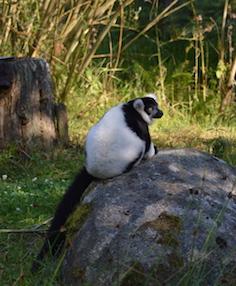
Comparative studies of taste perception are an important tool to study the mechanisms underlying the evolution of the sense of taste, as the taste perception of a species is thought to be linked to its feeding ecology. The different species within the primate order display a high diversity in dietary specializations, with the black-and-white ruffed lemur (Varecia variegata variegata) being one of the most frugivorous primates. The aim of the study was to determine taste preference thresholds of black-and-white ruffed lemurs for nine substances tasting sweet to humans; stevioside, rebaudioside A, glycine, L-alanine, L-proline, saccharin, sorbitol, polycose and galactose. A two-bottle preference test of short duration was used, with tap water as the alternative simulus. Taste preference thresholds were found to be 0.1-0.2 mM for stevioside, 0.05-0.15 mM for rebaudioside A, 15-20 mM for glycine, 2 mM for L-alanine, 10-20 mM for L-proline, 30-110 for sorbitol, 30-40 mM for polycose, 70-90 mM for galactose. One individual rejected saccharin at 1 mM, and no taste preference could be observed for this substance. L-alanine, stevioside and saccharin were either rejected at some concentrations or were neither preferred nor rejected at any concentration. These three substances have a bitter side taste to humans, and it is possible that the lemurs in this study are particularly sensitive to bitter taste. In general, the black-and-white ruffed lemurs preferred the taste of the majority of the tested substances over water.
Responsible for this page:
Director of undergraduate studies Biology
Last updated:
05/19/15
